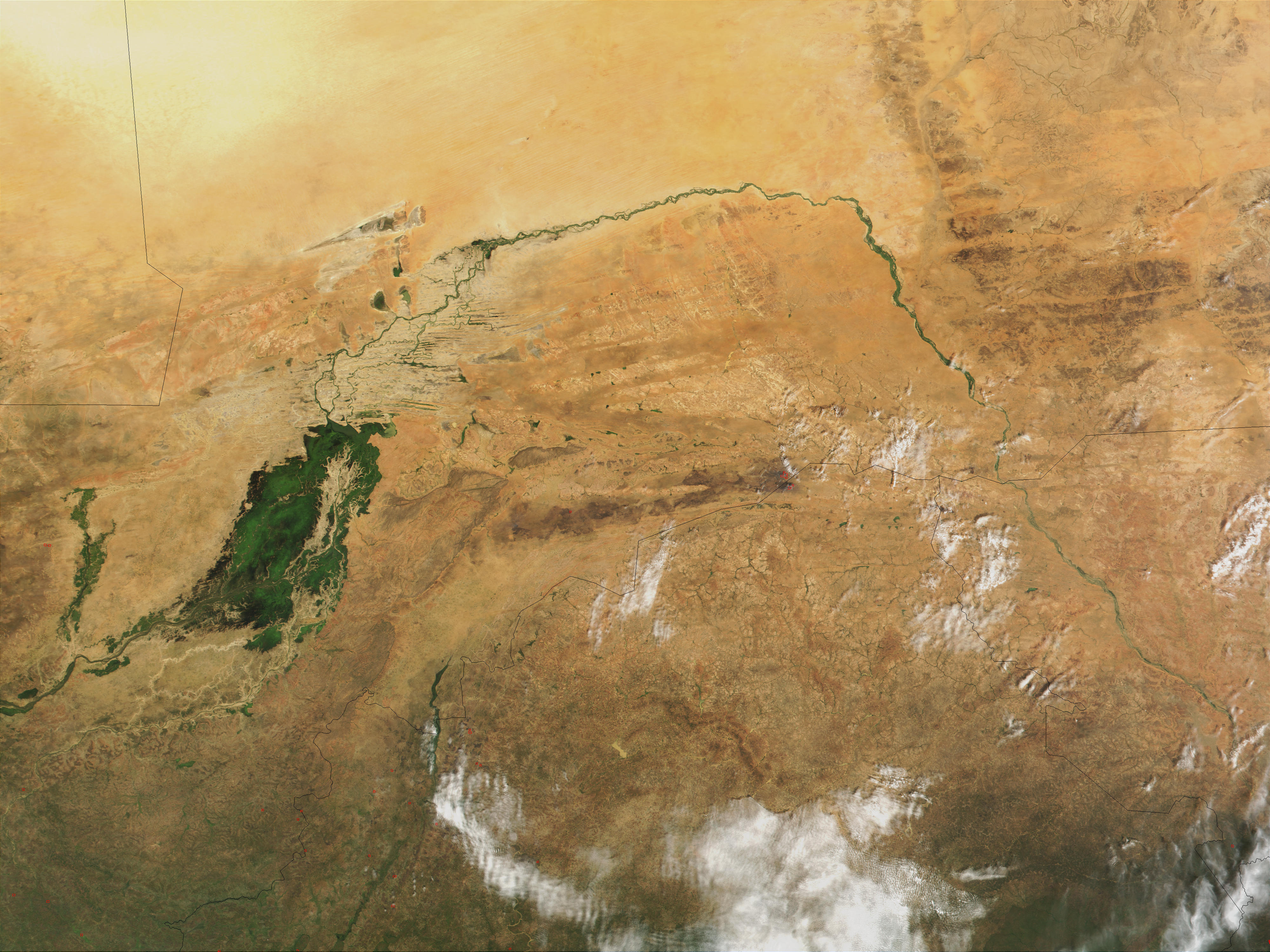Inverted River Delta on:
[Wikipedia]
[Google]
[Amazon]
 An inverted river delta is a
An inverted river delta is a
 An inverted river delta is a
An inverted river delta is a river delta
A river delta is a landform, archetypically triangular, created by the deposition of the sediments that are carried by the waters of a river, where the river merges with a body of slow-moving water or with a body of stagnant water. The creat ...
in which the narrow end of the delta emerges on the seafront and the wide end is located further inland, so that with respect to the seafront, the locations of both ends of the delta are inverted.
Explanation
River deltas
A river delta is a landform, wikt:archetype#Noun, archetypically triangular, created by the deposition (geology), deposition of the sediments that are carried by the waters of a river, where the river merges with a body of slow-moving water or ...
typically form on flat, coastal floodplains: the narrow end located at the point where a river fans out and deposits sediment in a region extending outward into the body of water which the river empties. In the case of an inverted delta, the delta is located at the waterway's exit from a large, flat valley, yet still inside the valley. The sediment is dropped within the valley and the clear water then exits into a bay or the ocean, so the apex of the delta is at this exit, a configuration said to be inverted from that usually seen. Inverted deltas typically do not last long in geological terms, since they tend to fill up with sediments rather quickly and eventually become normal deltas.
Examples
The Sacramento-San Joaquin River Delta
A classic example of an inverted river delta is the Sacramento-San Joaquin River Delta, which lies at the confluence of theSacramento
Sacramento ( or ; ; ) is the capital city of the U.S. state of California and the seat of Sacramento County. Located at the confluence of the Sacramento and American Rivers in Northern California's Sacramento Valley, Sacramento's 2020 p ...
and San Joaquin rivers in California
California () is a U.S. state, state in the Western United States that lies on the West Coast of the United States, Pacific Coast. It borders Oregon to the north, Nevada and Arizona to the east, and shares Mexico–United States border, an ...
. The water from the rivers that drain the entire, large California Central Valley exit through the Carquinez Strait
The Carquinez Strait (; Spanish: ''Estrecho de Carquinez'') is a narrow tidal strait located in the Bay Area of Northern California, United States. It is part of the tidal estuary of the Sacramento and the San Joaquin rivers as they drain int ...
, a narrow gap in the Coast Range. An inverted river delta exists behind this strait.
The Tagus River
Another example is the delta of theTagus
The Tagus ( ; ; ) is the longest river in the Iberian Peninsula. The river rises in the Montes Universales between Cuenca and Teruel, in mid-eastern Spain, flows , generally westward, and empties into the Atlantic Ocean in Lisbon.
Name
T ...
river in Portugal, although due to sedimentation this delta is now only very partially inverted, with the valley now mostly filled with sediment. It is still about wide and long, compared with the exit into the sea, and forms a large lagoon with large and very shallow sand banks which are uncovered during low tides. The delta used to be even bigger thousands of years ago.
References
{{Reflist Landforms Inverted river delta